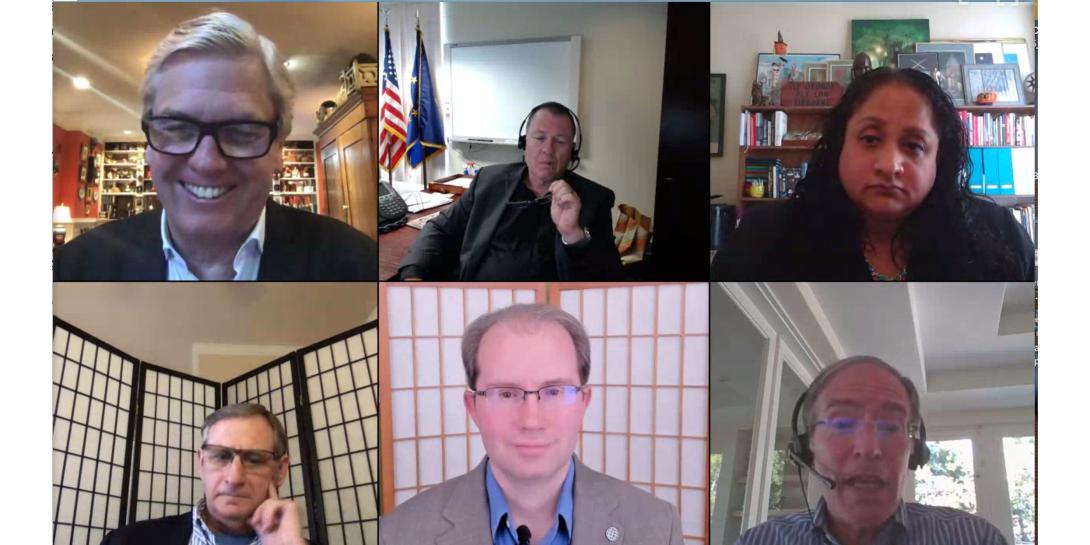Preparations Incomplete for Next U.S. Disaster
The United States had many plans at hand to deal with a national emergency on the scale of the COVID-19 pandemic, but the country failed to implement them properly. Part of the reason was institutional, but much was from a lack of coordination. And, the United States still is unprepared for the next disaster, whether natural or human-made.
These were among the findings of a white paper discussed in an AFCEA Cyber Committee webinar. Titled “The Case for Better National Emergency Planning,” the webinar featured five experts discussing the findings and recommendations of the committee’s white paper, “COVID-19 Compels Better NSEP Planning,” which looked at national security emergency preparedness (NSEP) through the spectrum of the pandemic experience.
A key finding by the panel was that long-extant plans were largely ignored. Asha George, executive director of the Bipartisan Commission on Biodefense, pointed out that the country had a blueprint for biodefense that could have been incorporated. She related that the George W. Bush administration generated the National Strategy for Pandemic Influenza more than a decade ago, and her own organization issued a blueprint for biodefense that looked at gaps in national preparedness.
“For COVID, no one seemed to go back and look at any of those old plans, and they didn’t look at the National Biodefense Strategy that the Trump Administration put out,” she charged. “If you don’t look at those plans, then you might as well have not had those plans at all.”
Significant changes have occurred over the past few years, and these changes affect what can be achieved—and what must be overcome, explained David Bray, director, Atlantic Council GeoTech Center; executive director, Commission on Geopolitical Impacts of New Technologies and Data.
He noted that in 2013, the number of sensors and networked devices exceeded the world’s total population of 7.1 billion people. By 2015, that number had risen to 14 billion devices. By 2025, that number may surpass 100 billion devices generating 150 billion terabytes of data. Properly assessed, this data can be a boon for addressing any of a number of potential disasters, he offered.
He cited as an example how experts determined the spread of the SARS virus in 2002 five months before China admitted to the problem. Analysts had noticed that the price of garlic—which is viewed as a cure-all by many Asian cultures—had risen tenfold. The same effect was observed in Asia in February 2020 as COVID began to spread. Other effects noticed were non-routine traffic changes in which people stopped going to their factory jobs and instead went to hospitals. “What we need to do is improve the sense-making that we collectively do on both what is happening and what we do to respond to it jointly,” he stated.
Building an effective pandemic prevention board will take a better understanding of roles and activities. Scott Charney, vice president, security policy, Microsoft, and vice chair, National Security Telecommunications Advisory Committee (NSTAC), noted that, unlike typical disasters that have a local flavor, the pandemic was a global/national event requiring coordination on a national scale. And, as a health event, it involved agencies that normally don’t do national planning.
Yet information networks held up well when tasked with new uses, he allowed. The challenge was that the federal government, as well as state and local authorities, were trying to respond to the pandemic under different sets of rules and designations. Telephone and other service providers were vexed by the different regulations and definitions. “We have to re-think NSEP communications in an environment where we have these national and international events to ensure that we are coordinated and can act quickly,” he stated.
James P. Craft, director, mission support, operations, Defense Threat Reduction Agency and project lead of the white paper effort, described the paper’s six recommendations and went to the heart of its justification. “We need to look at the broad issue of threats and readiness, because it’s not just COVID. What we don’t want is the next pain being a massive cyber failure—you name it: there are all kinds of things that we could be facing.
“The public has to demand that government invest in readiness and support and coordinate it,” Craft stated.





Comments